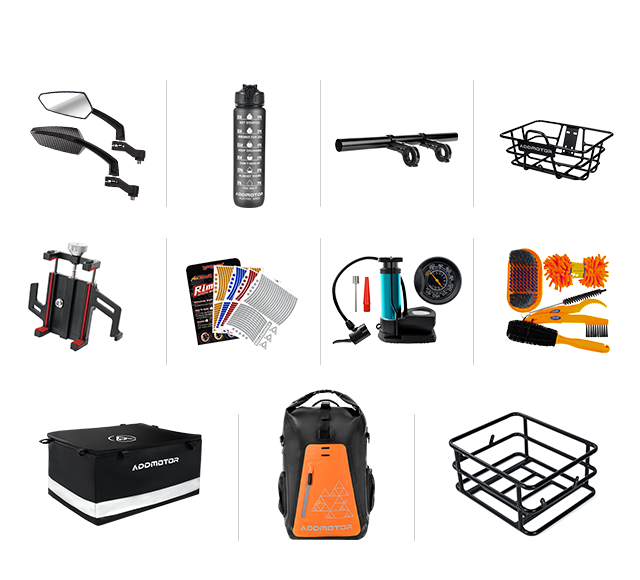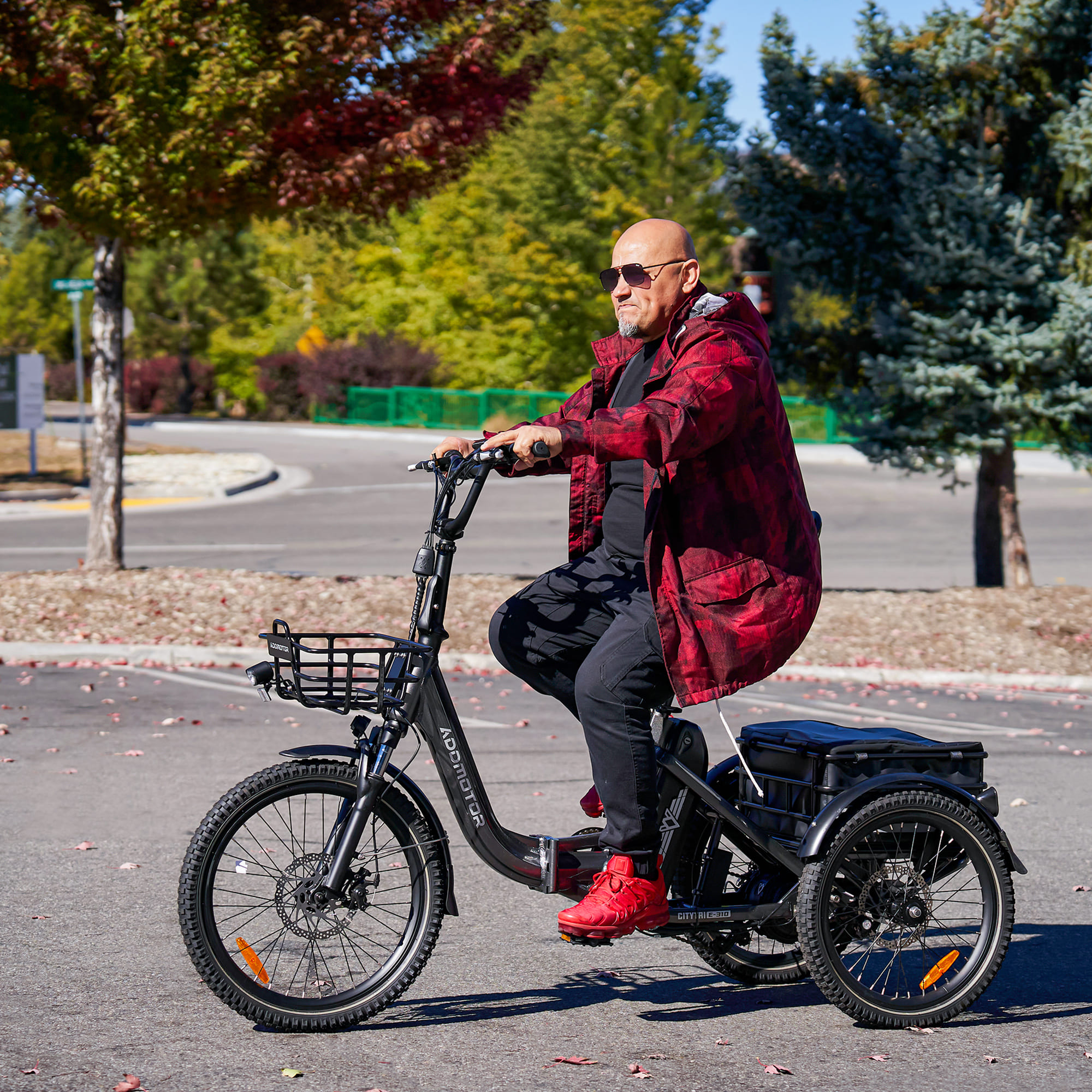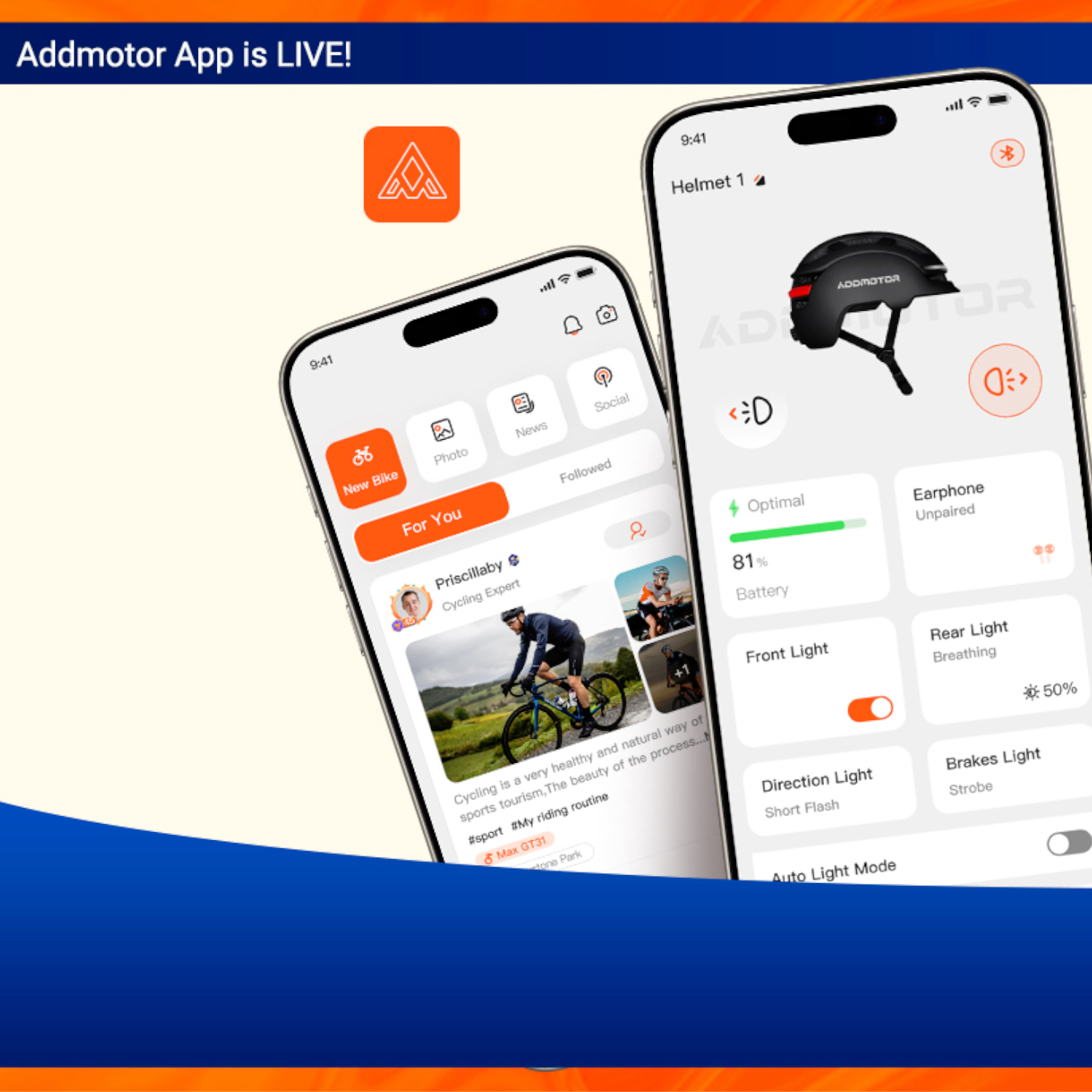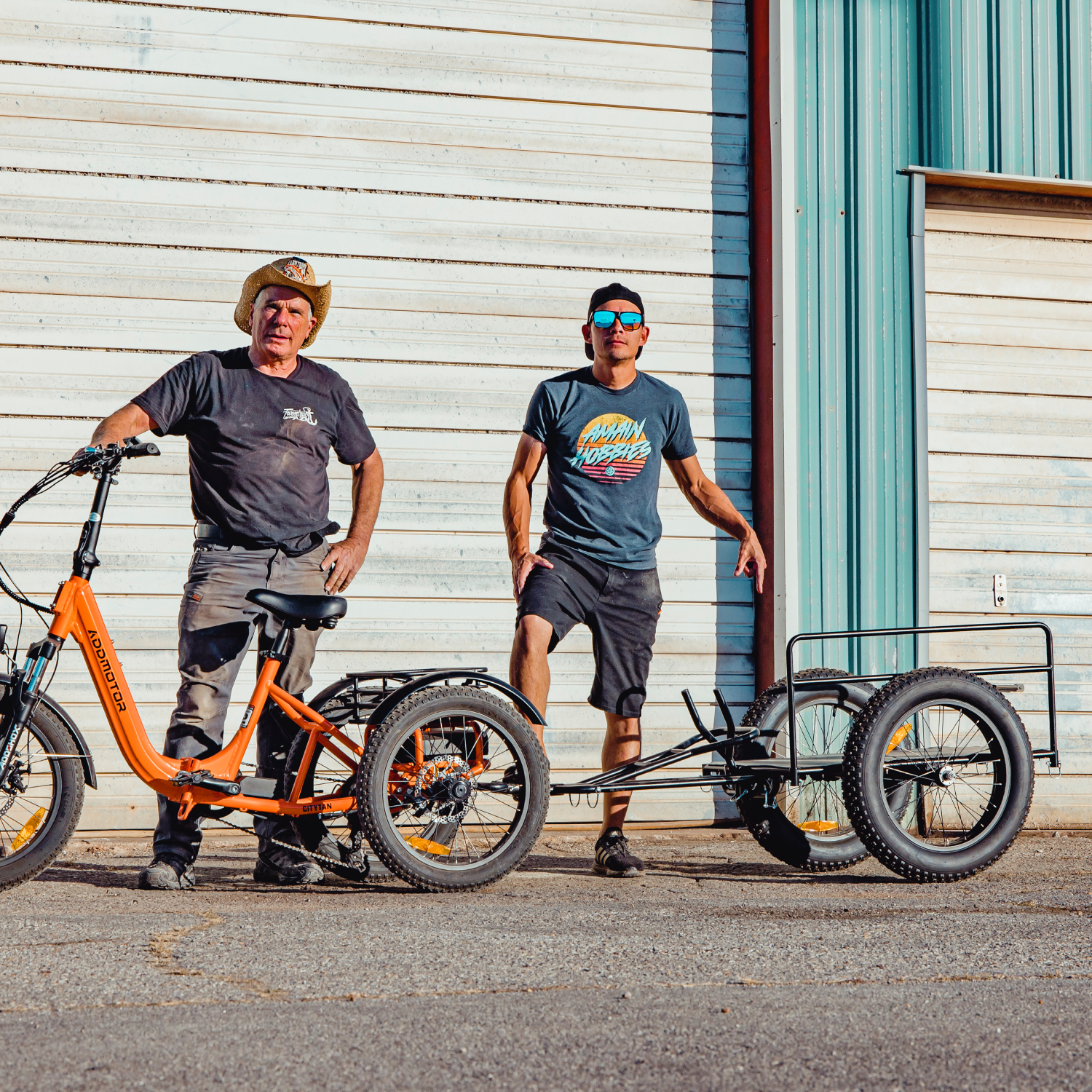Braking Systems Decoded: Comparing Different Brake Types for Electric Trikes
By Addmotor | 22 November 2023 | 0 Comments
When it comes to etrikes, one feature stands out as particularly crucial: the braking system.
It’s not just about stopping the vehicle; it’s about ensuring rider safety, providing control, and delivering the responsiveness that riders need when they’re out and about on their adult electric trike.
Riding fat tire electric trikes is an experience that’s both thrilling and practical. But, before you take that exhilarating ride, let's dive into its braking systems that ensure both fun and safety.
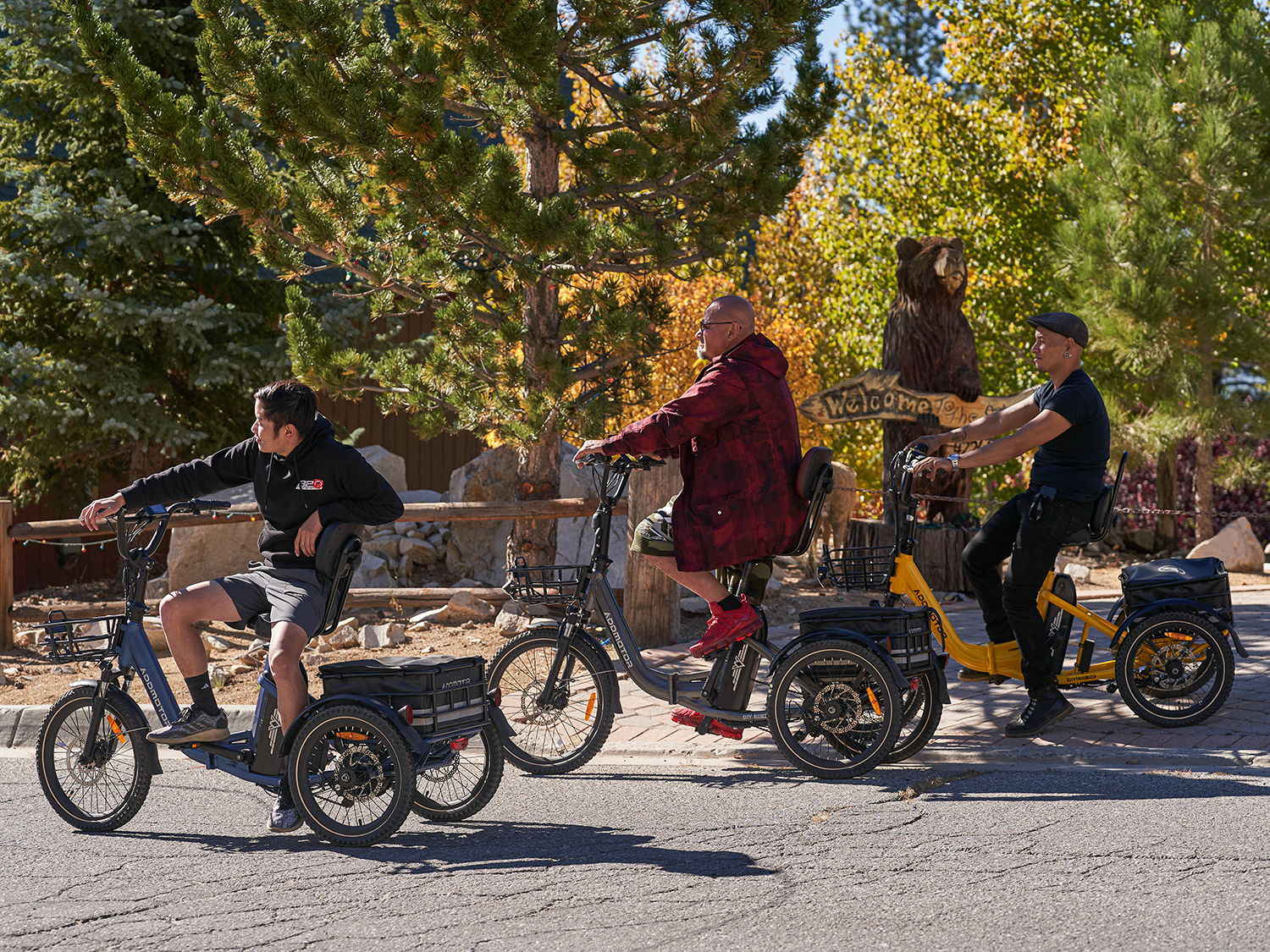
But what's the role of the braking system in electric trikes?
Imagine maneuvering through bustling streets or navigating downhill slopes without a responsive brake system. Scary, right?
That's where a braking system steps in to ensure control, responsiveness, and rider safety. A reliable braking system isn’t just a luxury; it’s a necessity in ensuring your safety, preventing accidents, and maneuvering fat tire electric trikes efficiently.
It contributes to overall control, stopping power, and responsiveness, enhancing the rider’s confidence and safety.
When the brake lever is squeezed, the system activates, applying pressure to the hydraulic fluid, which then travels through the hoses to reach the brake caliper. Within the caliper, the piston is prompted to push the brake pads against the rotor, generating friction that ultimately halts the e-trikes. This results in powerful stopping force, and smooth and easily modulated braking.
This system operates using a cable-actuated mechanism, where the brake lever is linked to the brake pads through a disk and cable setup. When the brake lever is pressed, the disk pulls the brake pads, causing them to clamp onto the rotor, creating friction that stops the trike.
They are generally less expensive and easier to maintain than hydraulic brakes.
The Addmotor CITYTRI E-310 adult electric trike, features robust Tektro mechanical disc brakes, ensuring dependable stopping power. This system guarantees responsive and controlled braking performance in various situations, making it an excellent option for budget-conscious riders or those who favor straightforward brake systems.
There are also other types of brakes used in etrikes, such as rim brakes, coaster brakes, and drum brakes. These brakes have their own set of characteristics and are suitable for different riding conditions. However, hydraulic and mechanical disc brakes remain the top choices for fat tire electric trikes due to their reliability and performance.
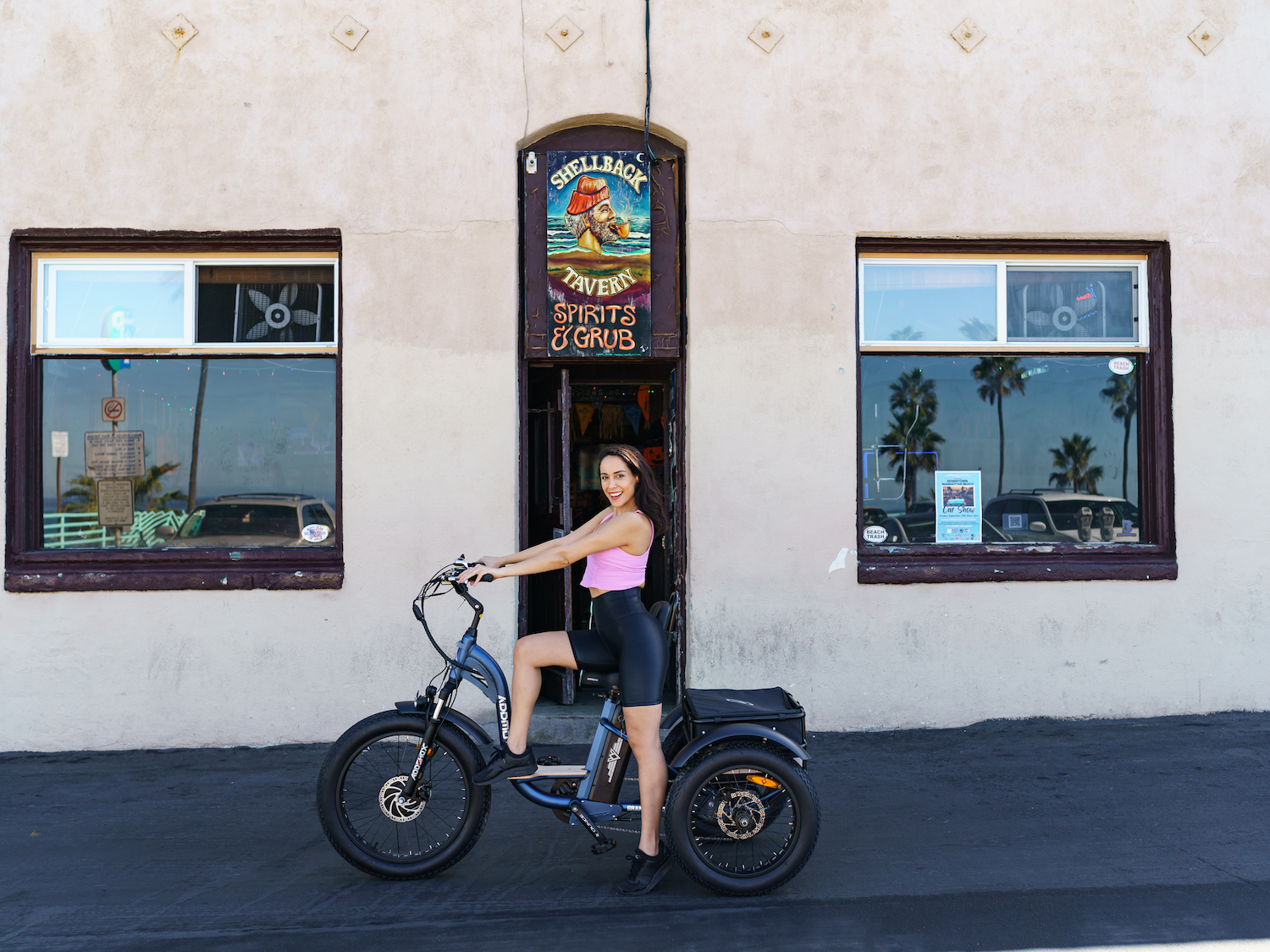
You may also like:
Demystifying Electric Tricycle Suspension Systems
In-depth Look at Addmotor's EB2.0 Etrike Controller
The reason behind this is that the type of riding you do and the terrain you ride on can greatly influence the type of brakes you need. For example, if you often ride in hilly areas or carry heavy loads, you might need a brake system with more stopping power.
Some of the best adult electric trike like the Addmotor GRANDTAN CITY come with a Tektro Mechanical Disc Brake with a Motor Cutoff Sensor that can stop quickly or slowly with excellent friction when applying brake lever.
Understanding the different types of braking systems and their features can help you make an informed decision when choosing a braking system for your e-trike.
So, before you embark on your next etrike adventure, take a moment to understand the braking system; that keeps you safe while you savor the ride.
It’s not just about stopping the vehicle; it’s about ensuring rider safety, providing control, and delivering the responsiveness that riders need when they’re out and about on their adult electric trike.
Riding fat tire electric trikes is an experience that’s both thrilling and practical. But, before you take that exhilarating ride, let's dive into its braking systems that ensure both fun and safety.

What is a Braking System and its Role in an Electric Trike?
Etrike brakes are similar to regular bicycle brakes, but they are specially designed to handle the unique demands of electric trikes, as they need to provide reliable stopping power, even under heavy loads or at high speeds.But what's the role of the braking system in electric trikes?
Imagine maneuvering through bustling streets or navigating downhill slopes without a responsive brake system. Scary, right?
That's where a braking system steps in to ensure control, responsiveness, and rider safety. A reliable braking system isn’t just a luxury; it’s a necessity in ensuring your safety, preventing accidents, and maneuvering fat tire electric trikes efficiently.
It contributes to overall control, stopping power, and responsiveness, enhancing the rider’s confidence and safety.
Different Types of Electric Bike Brake Systems
There are several types of brakes used in e-trikes, each with its own set of features, advantages, and applications, but let's focus on two of the most common: hydraulic brakes and mechanical disk brakes.●Hydraulic Brakes
Hydraulic brakes use a fluid (usually a type of oil) to transfer force from the brake lever to the brake caliper.When the brake lever is squeezed, the system activates, applying pressure to the hydraulic fluid, which then travels through the hoses to reach the brake caliper. Within the caliper, the piston is prompted to push the brake pads against the rotor, generating friction that ultimately halts the e-trikes. This results in powerful stopping force, and smooth and easily modulated braking.
●Mechanical Disk Brakes
Mechanical disk brakes, also known as cable-actuated brakes, use a steel cable to apply force to the brake pads.This system operates using a cable-actuated mechanism, where the brake lever is linked to the brake pads through a disk and cable setup. When the brake lever is pressed, the disk pulls the brake pads, causing them to clamp onto the rotor, creating friction that stops the trike.
They are generally less expensive and easier to maintain than hydraulic brakes.
The Addmotor CITYTRI E-310 adult electric trike, features robust Tektro mechanical disc brakes, ensuring dependable stopping power. This system guarantees responsive and controlled braking performance in various situations, making it an excellent option for budget-conscious riders or those who favor straightforward brake systems.
Main Difference Between Mechanical and Hydraulic Brakes
The main difference between mechanical and hydraulic brakes lies in their operation mechanism and performance. Here is a table to help you understand the difference easily-| Categories | Hydraulic Brakes | Mechanical Brakes |
| Function | Utilize fluid to transfer force to the brake pads | Use cables to apply force on the brake pads |
| Operation | Employ fluid pressure to exert force on the braking system | Apply braking force through cable tension |
| Performance | Generally offer smoother and more immediate stopping power | May have less modulation and control over the braking force |
| Complexity | More complex system with fluid reservoirs, hoses, and pistons | Simpler in design and mechanics |
| Effort & User-Friendliness | Requires less hand effort, making them more user-friendly and less fatiguing | May require more hand effort to apply brakes |
| Maintenance | Expensive and necessitates professional servicing. | Costs less and can be replaced on your own. |
| Cost | Tend to be more expensive due to the complexity of the components | Generally more affordable compared to hydraulic systems |
Other Types of Brakes
There are also other types of brakes used in etrikes, such as rim brakes, coaster brakes, and drum brakes. These brakes have their own set of characteristics and are suitable for different riding conditions. However, hydraulic and mechanical disc brakes remain the top choices for fat tire electric trikes due to their reliability and performance.
You may also like:
Demystifying Electric Tricycle Suspension Systems
In-depth Look at Addmotor's EB2.0 Etrike Controller
How to Choose Suitable Braking Systems for Etrikes
The million-dollar question: How do you pick the right brakes for your electric tricycle? Here are a few things to consider:●Riding Style and Terrain
First, ask yourself, are you a leisurely cruiser or an adventure seeker tackling rough terrains?The reason behind this is that the type of riding you do and the terrain you ride on can greatly influence the type of brakes you need. For example, if you often ride in hilly areas or carry heavy loads, you might need a brake system with more stopping power.
●Motor Cutoff Switch for Enhanced Safety
One of the crucial safety components in e-bike brakes is the motor cutoff switch. This feature automatically turns off the motor when brakes are applied, preventing unintended acceleration. Ensure the integration and functionality of the motor cutoff switch to enhance control and overall safety.Some of the best adult electric trike like the Addmotor GRANDTAN CITY come with a Tektro Mechanical Disc Brake with a Motor Cutoff Sensor that can stop quickly or slowly with excellent friction when applying brake lever.
●Modulation and Control
Look for brakes that provide excellent modulation and control. These features enable you to apply brakes gradually and precisely, adapting to various riding situations, allows for better maneuverability and enhances overall control.●Heat Dissipation and Cooling Properties
Heat dissipation is a critical factor. Brakes capable of handling heat efficiently are less prone to brake fade, ensuring consistent performance even during extended or intense rides. Opt for braking systems designed with adequate cooling mechanisms for sustained effectiveness.●Brake Pad and Rotor Compatibility
Finally, ensuring compatibility between brake pads and rotors is vital for optimal performance and longevity. Some brake systems require specific types of pads or rotors, so it’s important to check this before making a decision.Conclusion
As you hop onto your electric tricycle, remember, your braking system isn’t just a feature; it’s your guardian angel, ensuring your safety and control. Whether it's the powerful hydraulic brakes or the reliable mechanical disk brakes, choosing the right system is key to an enjoyable and secure ride.Understanding the different types of braking systems and their features can help you make an informed decision when choosing a braking system for your e-trike.
So, before you embark on your next etrike adventure, take a moment to understand the braking system; that keeps you safe while you savor the ride.
Leave a Reply
Your email address will not be published.Required fields are marked. *
Latest Stories

